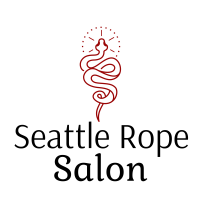The Lightning Bolt
Over the years I have developed an aesthetic for rope bondage, greatly informed by my role as a painter. In sketching the human form, or really any figure, it is important to add energy to the shapes you draft. The most quintessential mark made by a pen is the zig-zag, or the lightning bolt shape. It defies the grid-lock of logical polygons and drags the eye with it, moving the viewer’s gaze across different dimensions or planes of the artwork.
Music Overture by Kandinsky
The aesthetic impetus of rope follows the same design principles. The shapes we make when we tie have the potential to be energetic or boring. These could be simmered down to some basic rules.
Suspensions that leave the model’s body perfectly horizontal when mid-air are rather uninteresting in both photos and performance. A performance that pushes and pulls the body in interesting ways serves as a challenge for the model, creating emotional and aesthetic interest. This contortion is like wringing out a dish rag, the juicy feelings are extruded from the model’s body.
Mia by Namor
It’s like a study of the anatomy of a fall, the tumbling of the body through space. Even partial suspensions can be interesting if we acknowledge that the midline of the body, the waist, is the axis from which all beautiful shapes emerge. An arched back is often the key principle when the legs are together, the critical waist rope keeping the lightning bolt shape intact. The knees and thighs are most important when the legs are spread for creating energy, the infamous futomomo. Back bends and forward folds have this zig-zag built in, if the shape is kept strict.
Juju by Pallace
In this way, photography can be a useful too when developing your own aesthetic. Which angle is most potent for each shape? Where do the lines arouse the most interest? Photography can be distracting for intimacy, sure, but by framing your model’s body with a viewfinder or screen you can see poses in a new way.
-Pallace Garza




